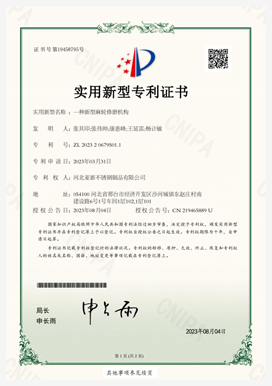wheat cutter reaper machine
The Evolution and Impact of the Wheat Cutter Reaper Machine
The agricultural sector has undergone remarkable transformations over the centuries, particularly with the advent of machinery that revolutionized farming practices. Among these innovations, the wheat cutter reaper machine stands out as a pivotal development that significantly increased efficiency in wheat harvesting. This article explores the history, evolution, and impact of the wheat cutter reaper machine on agriculture and society.
Historical Background
The need for the wheat cutter reaper machine emerged from the labor-intensive and time-consuming manual harvesting methods that dominated agriculture until the 19th century. Farmers relied on simple tools like sickles and scythes, which, while effective, required extensive human labor and time to harvest crops, particularly wheat, which could cover vast fields.
The first breakthrough came in the early 1830s with the invention of the mechanical reaper by Cyrus McCormick. His design, patented in 1834, incorporated a series of blades and a cutting bar that allowed the machine to harvest wheat more efficiently than human laborers could. The invention of the reaper marked the beginning of agricultural mechanization, leading to increased yields and reduced labor costs.
The Mechanization of Agriculture
The introduction of the wheat cutter reaper machine considerably changed farming practices. By mechanizing the harvesting process, farmers could cover more land in less time, which was crucial during harvest seasons. As the reaper became more widespread, farms transitioned from small, family-operated units to larger agricultural enterprises. The mechanization spurred the growth of agribusiness, leading to economies of scale that favored larger producers.
wheat cutter reaper machine

Over the decades, the design of the wheat cutter reaper evolved. In the late 19th century, advancements in engineering led to the development of combined harvesters, machines that not only cut but also thresh the grain, streamlining the entire harvesting process into one operation. These innovations reduced the number of workers needed in the fields, prompting a shift in labor dynamics in rural areas.
Economic and Social Impact
The economic implications of the wheat cutter reaper machine were profound. By increasing the efficiency of wheat harvesting, the machine allowed farmers to boost their output, which in turn contributed to food security. This increased productivity played a crucial role in the agricultural surpluses that supported industrialization and urbanization in many countries during the 19th and 20th centuries.
Moreover, the reliance on mechanical harvesters altered labor patterns within rural communities. While some laborers lost their jobs due to mechanization, new opportunities arose in machine operation, maintenance, and agricultural management. Education and training in these new technologies became essential, leading to changes in rural education systems and the overall skill sets required from agricultural workers.
On the social front, the wheat cutter reaper machine contributed to the movement towards mechanized agriculture, laying the groundwork for modern farming techniques. It broke down barriers to entry for new farmers, enabling them to scale operations quickly. This accessibility played a role in shaping the agricultural landscape, fostering a culture of innovation and adaptation among farmers.
Conclusion
The wheat cutter reaper machine is more than just an agricultural tool; it represents a significant leap in the evolution of farming practices. Its introduction has had lasting effects on the agricultural sector, influencing productivity, labor dynamics, and economic structures. As we continue to witness advancements in agricultural technology, the legacy of the wheat cutter reaper machine serves as a reminder of how innovation drives progress and shapes our world. As we face modern challenges such as climate change and food security, the lessons learned from this period of agricultural mechanization remain relevant today, guiding the future of farming and food production.
Latest news
-
When to Upgrade Your Old Forage HarvesterNewsJun.05,2025
-
One Forage Harvester for All Your NeedsNewsJun.05,2025
-
Mastering the Grass Reaper MachineNewsJun.05,2025
-
How Small Farms Make Full Use of Wheat ReaperNewsJun.05,2025
-
Harvesting Wheat the Easy Way: Use a Mini Tractor ReaperNewsJun.05,2025
-
Growing Demand for the Mini Tractor Reaper in AsiaNewsJun.05,2025







